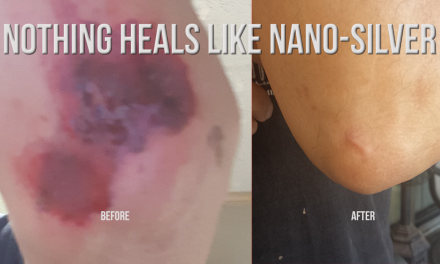Tooth decay usually begins on the outer layer of the tooth called enamel. You may notice a white spot on your tooth and wonder what it is. This white spot or area of decalcification indicates calcium is leaching from your tooth. The spots initially cause no harm, except for the appearance, especially if it’s on your front tooth. The area signifies loss of minerals, which weakens the enamel and eventually can lead to tooth decay. As the decay progresses you may feel pain, and need a root canal or lose the tooth.
What you may not hear from your dentist is this stage of decalcification is reversible. Proper home care is just one of the ways to remineralize and reverse the tooth decay process.
Cause of White Spots
To understand how to reverse tooth decay we need to find out first what all the causes of decalcification are.
The main cause of decalcification is accumulation of plaque that is not removed on a daily bases through proper oral hygiene care. Plaque contains acid produced by the arch enemy of a healthy mouth known as Streptococcus Mutans. Plaque, which is the film felt on your teeth a few hours after brushing, contains this harmful enemy. This bacteria feeds on sugars in the mouth and produces acid by-products.
If not cleaned properly, after just 24 hours plaque starts to cause problems. Within three weeks the acids from plaque cause damage and possibly the white spots, depending on how strong the enamel layer is. If the white spots are left unattended the acid breaks through the enamel and decay goes into the deeper layers of the tooth.
Areas Most Often Affected by White Spots
Wearing braces makes it difficult to brush your teeth properly, especially under and around brackets. Once the braces are removed, you or your child may have straight teeth, but you may also be greeted by several white spots where the brackets were. If you have a daily habit of drinking high acid content drinks, you are susceptible to white spots. These can be carbonated sodas or popular sports drinks. Some brands of tooth whitening strips can also demineralize the enamel layer. Some people like the quick whitening effect of these strips and may use them continuously for months. These strips can also be highly acidic and therefore damage teeth.
People who suffer with acid reflux condition or bulimia expose their teeth to acid. Sucking on lemons, drinking water with high levels of lemons or sipping apple cider vinegar are more ways to saturate your teeth with acid.
Nutritional deficiency could be another cause of white spots. People with gluten intolerance may only eat unsprouted grains, which creates phytic acid, which stops the absorption of minerals.
Tips on Reversing Tooth Decay
The good news is these decalcified areas can be remineralized. Remineralization does not happen overnight. It normally takes two to four months before you notice improvement, depending on how diligent you are in your daily care. For the white spot to completely reverse, it may take up to 12 months. Below are some tips to help remineralize your teeth:
1. Correct your diet. Stay away or minimize high acid content foods and drinks such as:
Carbonated sodas like Coke, Pepsi, etc. Some of these beverages not only are high in sugar, but also phosphoric acid, which is used by dentists to acid etch teeth before filling them.
- Sports drinks.
- Acidifying grains such as: white flour, rice, wheat, wheat germ and cornstarch.
- Acid producing animal protein such as red meat, shrimp and oysters.
- Sugar and high fructose corn syrup.
- Beverages such as orange juice, apple cider and lemonade.
- Cheese.
2. Minimize dry mouth. The drier the mouth, the more likely you are to have tooth damage by acid.
- Saliva is extremely important for the health of the teeth and supporting tissues. It prevents infection by maintaining a neutral pH of the mouth, therefore helping to protect against acid attack by harmful bacteria.
- Dry mouth can be caused by certain prescription and nonprescription medications for treatment of depression, pain, allergies, and many others.
- Dry mouth can also be due to certain medical conditions such as HIV/ AIDS, diabetes, cystic fibrosis, stroke, Sjorgren’s syndrome, fibromyalgia and others.
- Simply not drinking enough water can bring about dehydration and dry mouth. Make sure to drink plenty of water and keep your mouth moist.
- Tobacco products can effect saliva production and cause dry mouth.
- Mouth breathing is another way to cause dry mouth.
- To minimize dry mouth, suck on xylitol mints or chew xylitol gum; brush with xylitol toothpaste; breathe through your nose, not your mouth, as much as possible; use a room vaporizer to add moisture to your room; use an over-the-counter saliva substitute, if needed.
3. Practice excellent home hygiene care.
- Tooth enamel has no nutrients goings through it, similar to your nails. It’s mostly (96 percent) made of minerals. This layer is only 2–3 mm in thickness. Once acid penetrates it, it is understandable how it quickly can become damaged. Poor diet, high in acid content foods and beverages, and poor oral hygiene can cause enamel to
- weaken over months and eventually turn into tooth decay.
- Proper flossing and brushing, especially with xylitol toothpaste, can help bring about remineralization of enamel. As the mouth is kept at a neutral pH, acid attack on enamel is minimized and the enamel layer is allowed to remineralize.
In conclusion, you can strengthen the enamel with just a few daily proper practices and foregoing old bad habits. The enamel layer of your teeth is in a constant flow of remineralization and demineralization. If it is demineralizing more rapidly than remineralizing you develop white spots and eventually tooth decay.
You can bring about remineralization of the enamel layer through maintaining a neutral pH oral environment by using xylitol containing dental products, and eating nutritious foods and supplements such as:
- Calcium and vitamin D.
- Vitamin K2 is essential for bone growth and mineral absorption.
- Using only sea salt, which contains many trace minerals.
- Home made broths containing low acid vegetables and/or chicken.
- Avoiding processed, high acid beverages and simple carbohydrate and sugary foods.
A healthy beautiful smile does require a balanced lifestyle, but it’s well worth it.











